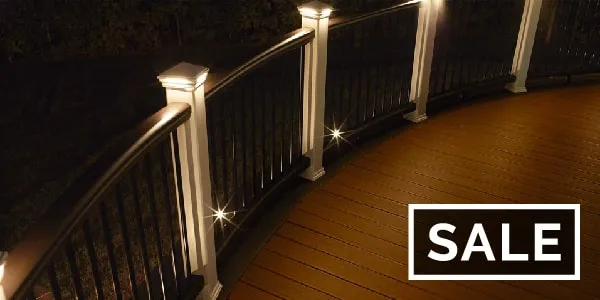What is the Difference Between "On-Center" and "True" Measurements For Deck Railings?
If you're planning, buying, or installing a new deck railing, you've probably run into a confusing set of measurements that don't seem to align. For example, why does a six-foot-long railing section often measure in at just 67-1/2 inches, rather than the full 72?
The difference comes down to two different types of measurement: "on-center" dimensions and "true" dimensions. We'll break down the differences below and help you make sure you get the right size deck railing to fit your space.
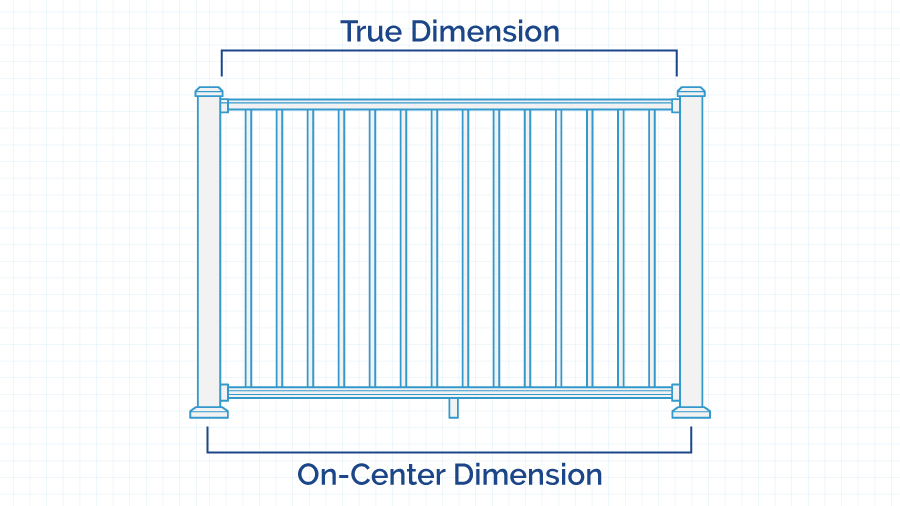
Table of Contents
- What is an "on-center" measurement for deck railings?
- What is a "true" measurement for deck railings?
- Do different deck railings use on-center or true measurements?
- How do I convert "on-center" measurements to "true" measurements for my deck railing?
- Why do some railing systems use "true" measurements for shorter rails, but "on-center" measurements for 8-foot rail kits?
- How do I make sure I get the right railing to fit my space?
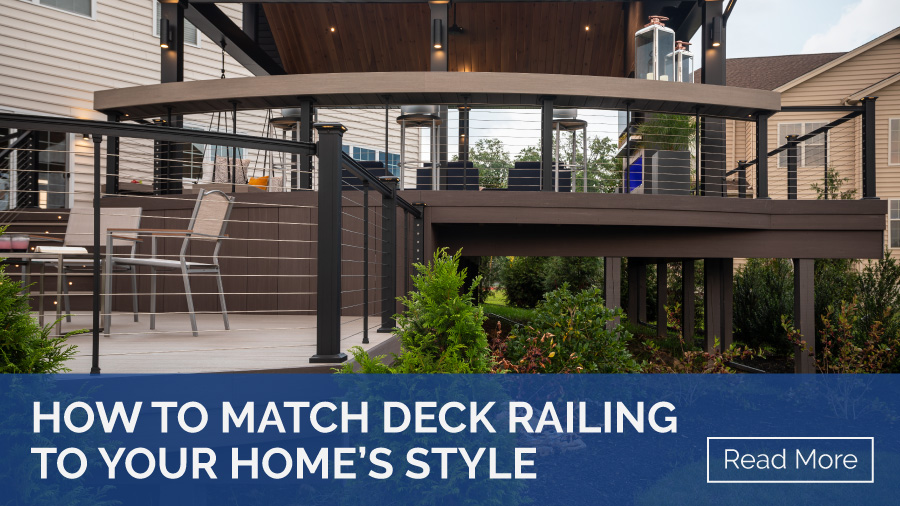
Understanding Deck Railing Measurements
When buying deck railings, it's important to understand the difference between an "on-center" measurement and a "true" measurement to make sure you don't get a section of railing that comes up a few inches short of filling your space.
Let's break down both types of measurements and how to make sure you get enough railing to fill your deck from end to end.
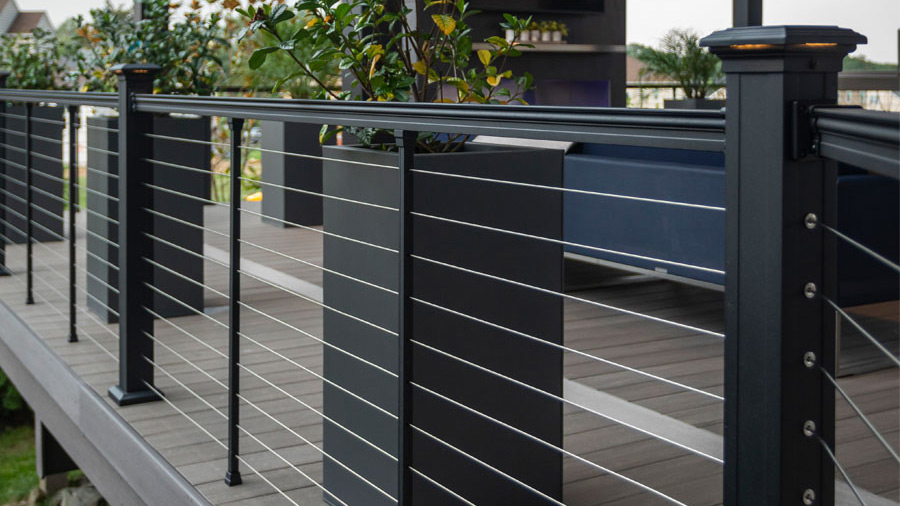
What is an "on-center" measurement for deck railings?
Traditionally, many deck railings have used "on-center" dimensions, sometimes called "nominal" measurements. This type of measurement includes not just your rails, but also your posts. It's called "on-center" because this type of dimension is measured from the center of one deck post to the center of the next deck post.
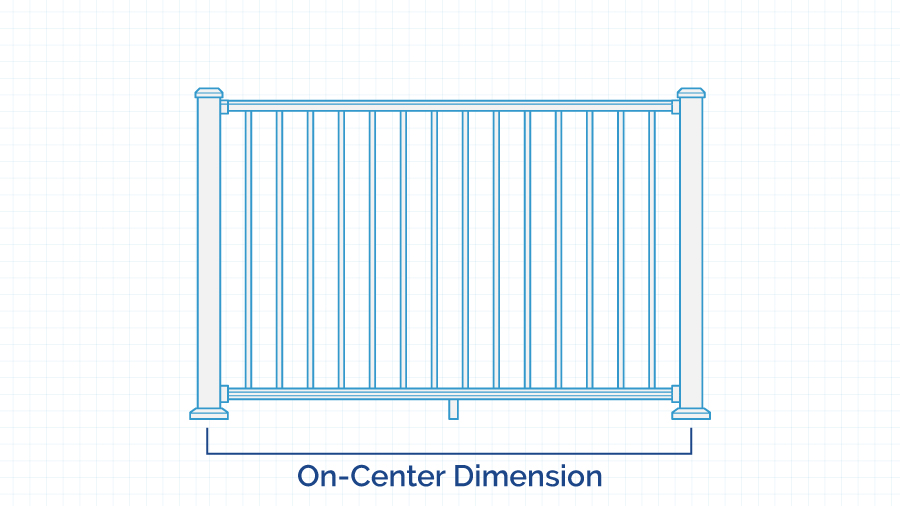
This means an "on-center" or "nominal" measurement includes half the width of each post. On a system like Trex Transcend Composite Railing using 4-1/2-inch post sleeves, that means a 6-foot section of railing actually comes with a top rail that is just 67-1/2 inches long. The remaining 4-1/2 inches are covered by the post on either side.
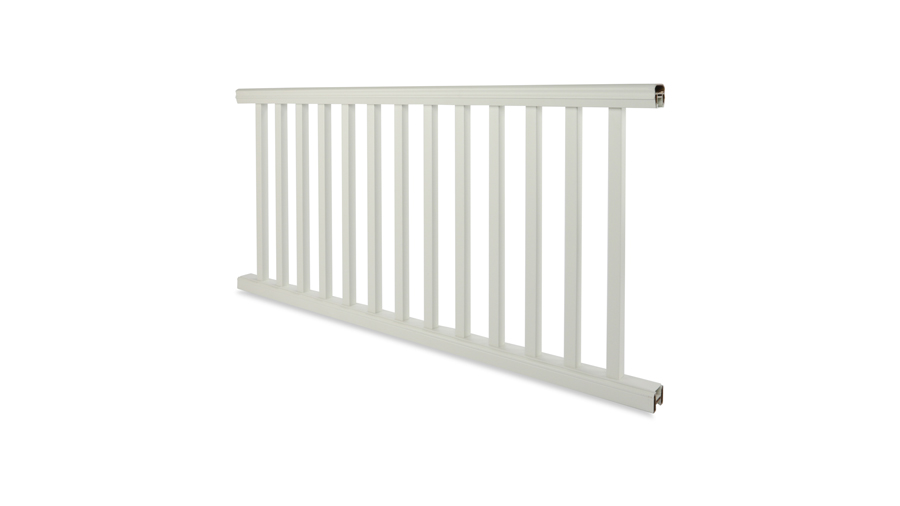
How do I measure my deck for a railing with "on-center" dimensions?
If you're shopping for a deck railing that uses "on-center" measurements, make sure you measure your deck from the center of one post to the center of the next post.
If you have existing wood posts that you're going to incorporate into your new railing, measure and make a mark in the center of the post, measuring from center mark to center mark. If you don't have posts yet, decide what size posts you will use and either mount them or mark where they'll go on your deck surface. Then measure from the center of one post to the center of the next.
Fortunately, deck railings are typically easy to cut down in size. So the most important thing is that you buy a rail long enough to fit your gap - you can cut off any excess you need, but you can't make your rail longer if it doesn't quite reach the next post.
What is a "true" measurement for deck railings?
In contrast, some deck railing systems sell their top and bottom rails using "true" dimensions, sometimes called "actual" dimensions. Just as the name implies, this type of measurement is the actual length of just the top rail - not counting the posts that will go on either side.
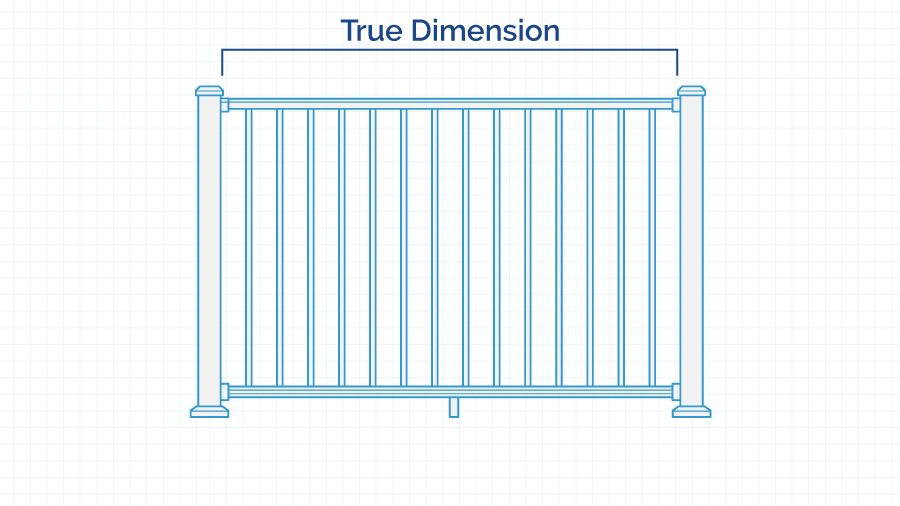
This means that a complete, assembled section of railing will actually come out longer than the "true" dimension of the rails when you include the posts. For example, a true 6-foot rail kit for Westbury Tuscany Aluminum Railing using 4-inch posts will actually create a railing that is 76 inches long (from the center of one post to the center of the next.
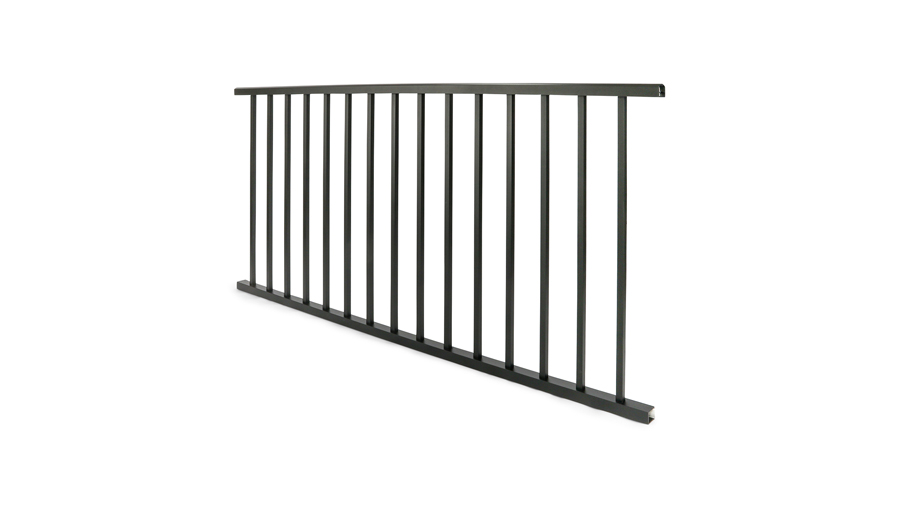
How do I measure my deck for a railing with "true" dimensions?
In contrast to "on-center" measurements, if you're shopping a railing system with "true" dimensions, you need to measure without including any of the posts, and factor the post's width in later on.
If you have existing posts that you're going to incorporate into your new railing, measure only the space between the posts. (If you plan to use post sleeves, slide them on and measure from sleeve to sleeve, or factor in the width of the sleeve into your measurements). If you don't have posts yet, decide what size posts you will use and either mount them or mark where they'll go on your deck surface. Then measure from the side of one post to the side of the next.
Fortunately, deck railings are typically easy to cut down in size. So the most important thing is that you buy a rail long enough to fit your gap - you can cut off any excess you need, but you can't make your rail longer.
Do different deck railings use on-center or true measurements?
Yes - some railing systems sell kits based on "on-center" measurements, while others use "true" dimensions.
Key-Link American Series Railing (pictured below), for example, sells rail kits in true dimensions of 6 feet, 7 feet, or 8 feet long.
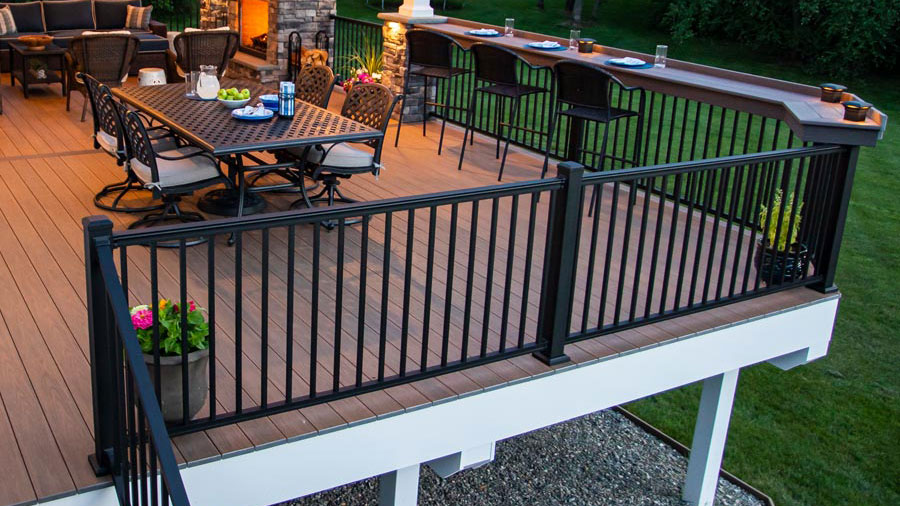
Meanwhile, Trex Transcend Composite Railing (pictured below) sells rail kits in "on-center" dimensions: a 6-foot section is 67-1/2 inches and an 8-foot section 91-1/2 inches long.
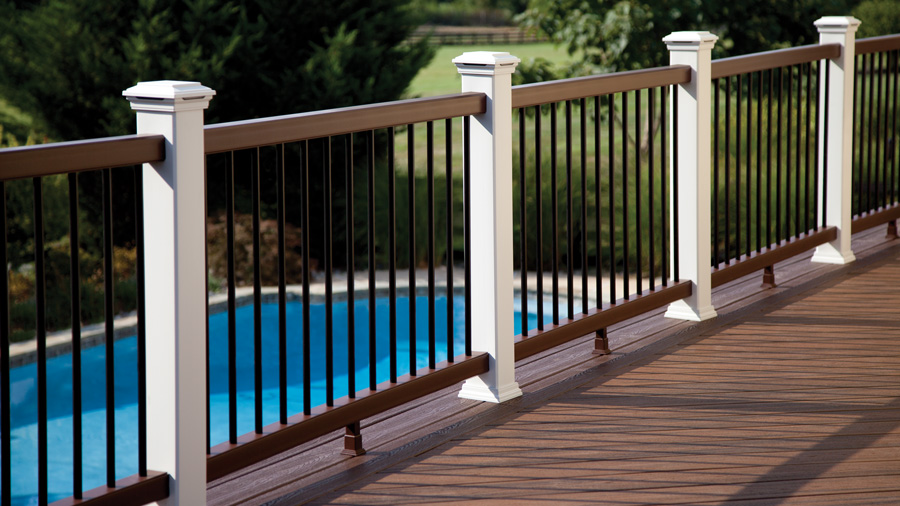
The good news is that you don't need to buy exactly the right size for your space - you just need to make sure your rails are long enough to span the gaps between posts. You can always cut them down to shorter lengths.
How do I convert "on-center" measurements to "true" measurements for my deck railing?
The main difference between on-center and true deck railing measurements is that on-center dimensions include half of the posts, while true dimensions don't include posts at all. So to convert from one measurement to the other, you simply have to add or subtract the width added by your posts.
If you measured your deck using on-center spacing and found a deck railing that uses true dimensions, you can either measure again (this time measuring the "true" dimension from the edge of one post to the edge of the other) or add the width of one full post to the true length of the rails to get an on-center measurement for a section of that railing.
If you measured the true distance between posts but found a deck railing that uses on-center dimensions, you can either measure again (this time measuring the "on-center" dimension from the center of one post to the center of the other) or subtract the width of one full post from your on-center measurement to find out how long you need the "true" length of your rails to be.
To make things even simpler, just make sure that the true or actual length of your rails is long enough to cover the gap between your posts. You can always cut down your rails to fit a smaller gap.
Why do some railing systems use "true" measurements for shorter rails, but "on-center" measurements for 8-foot rail kits?
_landscape.jpg)
Some of our railing systems, like AFCO Pro Aluminum Railing, use a combination of true and on-center measurements. It's an odd quirk with a good reason:
AFCO Pro's 4-foot and 6-foot rail kits use true dimensions: that means a 4-foot kit has rails that are a full 48 inches long, and a 6-foot kit has rails that are a full 72-inches long. But 8-foot rail kits use "on-center" dimensions, creating 93-inch rails. Why? The slightly shorter rails save you a bundle when it comes to shipping costs, and we always want to give our customers the best value for their project.
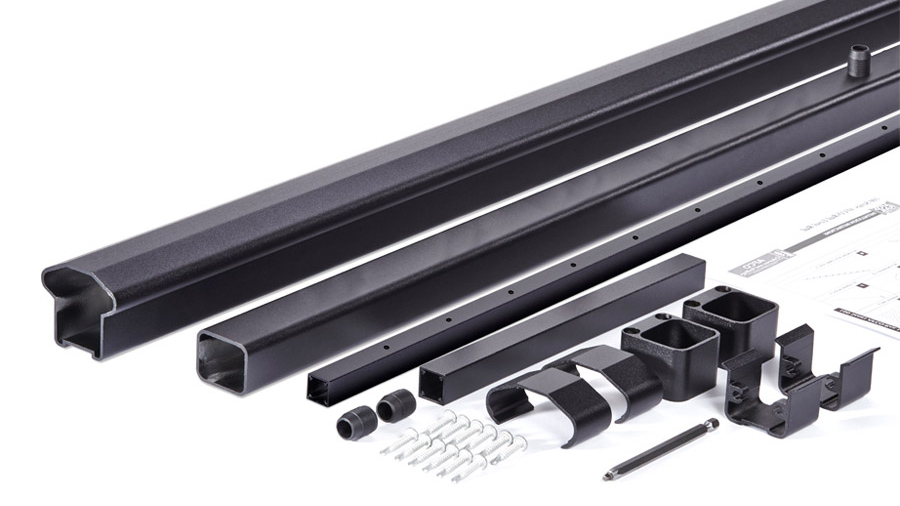
How do I make sure I get the right railing to fit my space?
As we noted above, the most important thing is to make sure you buy rails that are long enough to span the entire gap between your posts. When planning a deck railing, it's a good idea to sketch out an outline of your deck and plan where your posts will go first.
Then you can make sure to buy rail kits that will span the entire gap between posts. Metal, composite, vinyl, and wood railings are all easy to cut down to shorter lengths, so if you buy a longer section, you can safely cut it down to perfectly fit your space.
For help planning where to put your posts - and to make sure all your rail kits are long enough to span between them - give us a call at 1-888-824-5316. Our team of experienced project planners would love to help make your deck railing project smoother and faster so you can get the deck railing you've always wanted in one easy upgrade.


